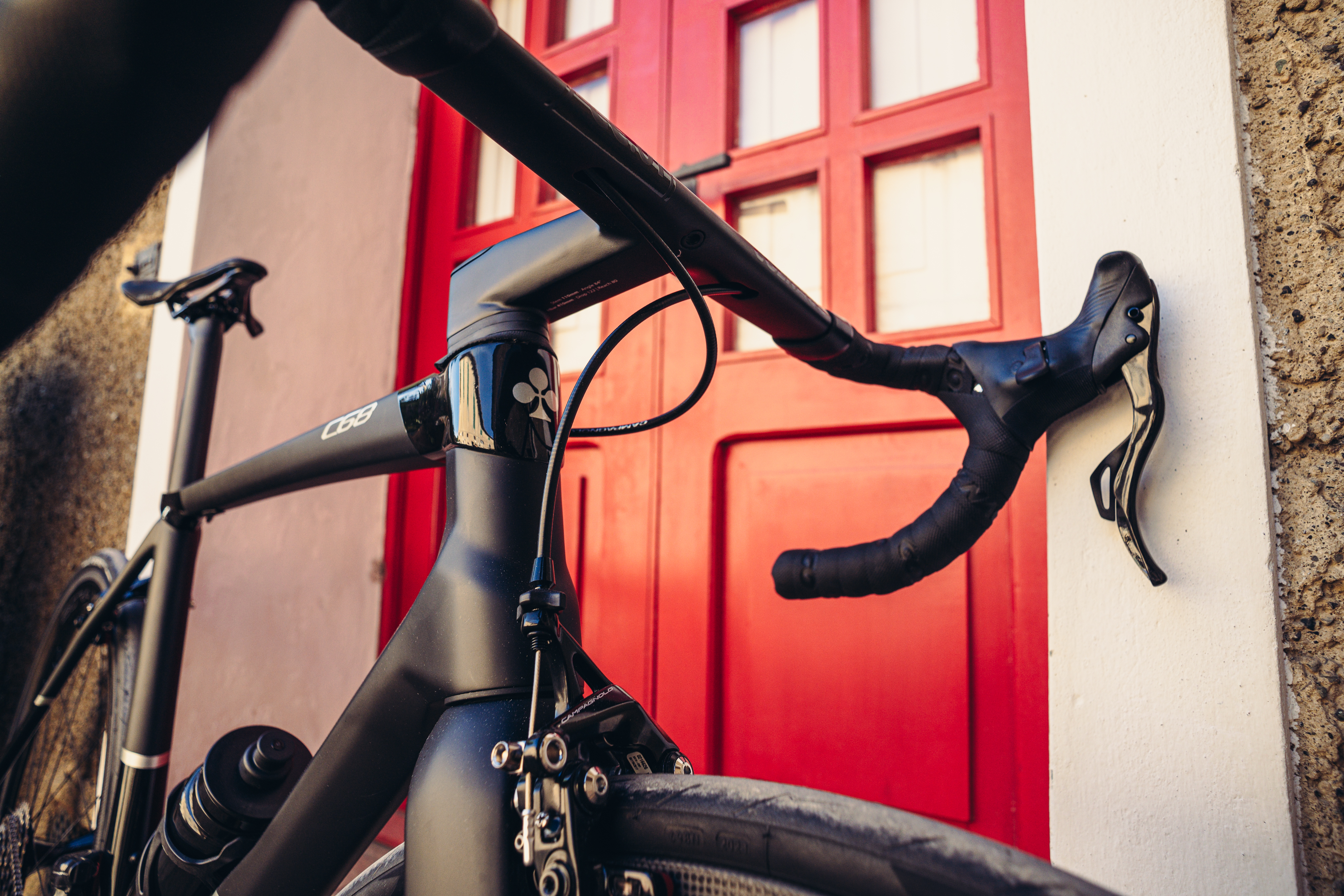
At a glance, you could be forgiven that the marketing folk at Colnago had suffered some kind of midweek malaise and accidentally mixed up some 10-year-old images with their new bike release. But no, the latest iteration of its C68 series of frames really is built to take direct mount rim brakes.
The swing tag reads £6,299 ($7,995) – a very modern price for what is fast becoming an outdated braking system.
Who will buy it, you might ask. Well, Colnago says it is aimed at "people with a sophisticated cycling culture".
If you're a disc brake aficionado, try not to take it personally. Our between-the-lines interpretation is that this is a bike for those who have been around cycling for a while, and grew up riding rim brakes and watching their heroes ride them in the Tour de France.
Nostalgia is powerful, and it sells.
It's a brave move from Colnago though – which was, ironically, one of the first manufacturers to bring hydraulic discs to a road bike when it released its C59 Disc in 2012.
After all, if you want a slice of handmade Italian nostalgia you can buy the real thing on the used market – and you could afford several beautiful 30-year-old steel Colnagos, complete bikes no less, for the price of the new C68 frameset.
To talk too much about nostalgia misses the point though. There are plenty of riders who prefer riding rim brakes full-stop.
The outright stopping power of discs and, crucially, wet weather performance may be superior, but these things are only part of the equation. There is a practical side to rim brakes that is undeniable, argues Trevor Beauchamp, the owner of Liphook Cycles in Hampshire.
"It's a pain if you go to the garage and you've lost a bit of fluid from your disc brakes," he points out. "But with rim brakes you can just grab an Allen set and tweak them. I think in a way disc brakes are overcomplicating the bicycle."
There is also a significant advantage as a home mechanic when it comes to swapping brake pads with rim brakes – it's easier to both see when it needs doing, and to actually carry out the swap.
On top of this, they tend to build into a lighter bike, too – and who doesn't want to save weight?
"I wish a few more companies would do it [sell rim brake bikes]," Beauchamp, "because there's a lot of people that still want them, especially the old-school.
"I'm 60, and I still ride a rim brake bike. If you want a nice bike for the summer, a rim brake will be sufficient."
The potential issue for new C68 owners, he suggests, could be finding a nice set of rim brake wheels to go with the frame, as they are becoming more and more scarce.
Likewise, as Colnago says itself, there are only three groupsets compatible with it – one from each of the big three groupset manufacturers – and perhaps slightly ironically given the nostalgia aspect, they're all electronic.
'100 Climbs' author and outspoken rim brake devotee Simon Warren reckons the cost of the bike is too high to be of real benefit to many of those looking for practical rim brake solutions.
"One of the main reasons people are sticking with rim brakes is the astronomical cost of building a race-ready lightweight bike with discs," he says. "This Colnago does not help that problem although its introduction is welcome and goes to show there is a market for rim brakes," he argues.
However, he adds: "It only takes electric gears which is a big no from me."
One rider who describes himself as a disc brake convert is Cycling Weekly's Tech Editor Simon Fellows – "I have a rim brake bike I enjoy looking at, and a disc brake bike I enjoy riding," he says pointedly.
"I was brought up with rim brakes, and I’m still a big fan," he qualifies. "The direct-mount rim brakes fitted to my delicately proportioned 2019 De Rosa SK Pininfarina so perfectly match that bike's aesthetic that the disc brake version has always appeared a travesty to me.
"However, beyond looks and a small weight penalty, disc brakes are superior in every other way," he says. "At 191cm and approaching 90kg, I’m a big, heavy rider who lives in a hilly area. So, I appreciate the stopping power of a good disc brake. Yes, they can drag from time to time, but I’ve suffered many sticky rim brake calipers over the years too. What’s more, disc pads eat easily replaceable rotors, not expensive rims.
"As the UK becomes warmer and wetter, many of my rides are taken on rain-soaked roads. I already find descending in these conditions exhilarating enough without throwing severely impaired braking into the mix. I’m a disc convert and I’m happy that way."
As a manufacturer with so much history behind it, if anyone was going to release a rim brake frame in a heritage move, it makes sense that it was Colnago.
It has no doubt done the sums and will probably sell as many as it expects to (reading between the lines, this won't be very many: "Because of its special and niche nature, very few people will be able to boast of owning one", Colnago says).
But discs have a few key advantages over rim brakes, and crucially have been universally adopted by the industry – and that isn't about to change. It is a juggernaut with unrivalled stopping power but no intention of using it. One expensive rim brake frame won't change that.







